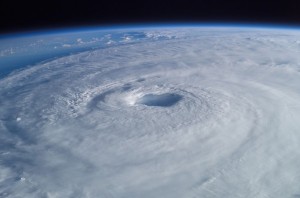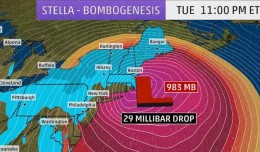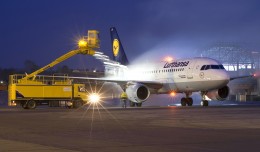As we approach the climatological peak of the 2014 Atlantic hurricane season, you may have noticed that it has been pretty quiet out there. With only two named storms so far, many are wondering why we haven’t seen more action and if we can already breathe a proverbial sigh of relief. Though it’s certainly too early to say, the NOAA Climate Prediction Center has issued a revision to its 2014 Atlantic Hurricane Outlook, calling for an even lower chance of storm development for the balance of this hurricane season.
Using language that I find to be a bit deceptive at first glance, the climate center announced an “increased chance of a below-normal [hurricane] season.” After figuring out that that actually meant less storms, I immediately was both relieved and concerned. When the public is led to believe that storms are less likely to happen, its guard is let down and the lack of real preparedness can become a serious problem. While I believe that the government’s prediction is rooted in serious science and makes sense, I also believe it is essential we remind the public to stay vigilant in monitoring the situation, especially later in the season. Most people forget that the hurricane season stretches many more months than just the summer and as a one-time resident of Oceanside, NY, I know what a weak, late-October hurricane can do.
This new outlook was issued in response to numerous weather phenomena being observed across the tropical Atlantic. Back in the spring, the Climate Center forecasted the 2014 season would be a quiet one, but observations so far have surpassed even the most pessimistic prediction models. Vertical wind shear and subsidence have both been very pervasive along the route many hurricanes would take to develop, inhibiting most West African monsoonal waves from developing. Speaking of these waves, an unusually low number of them have been observed moving off the African coast, due to a drier-than-normal monsoon season. Furthermore, the ocean itself is not conducive to storm growth, as sea surface temperatures remain sharply lower than is typically seen this time of year. As if all these factors were not enough, an El Niño pattern is still slated to develop which would simply reinforce all the aforementioned factors.
With all this in mind, the updated forecast for the remainder of this hurricane season puts a 70% chance of there being just seven to 12 named storms (including the two we’ve already seen) and only zero to two major hurricanes (packing winds of over 111 mph). If this were to validate, the 2014 season would be below the 30-year average of 12 named storms and three major hurricanes. A relatively calm Atlantic hurricane season would be a welcome gift to the aviation and tourism industry, not to mention the millions of Americans situated along the Gulf and Atlantic coasts. Reduced flight delays, faster flight times and fewer hotel cancellations spell major savings for both businesses and travelers, while a lack of hurricanes would mean a summer gone by without major home and business damage to repair.
Before you go running to book a late-season, last-minute deal to the Caribbean or decide to put off storm-proofing your home for another year, remember that this prediction is just that: a prediction. Sure, the deck is stacked against a sudden uptick in the power and frequency of hurricanes this year, but it would only take one storm to make the season memorable — and not in a good way. As I alluded to earlier, it’s important to remain aware and prepared through late into the fall, as some of the costliest hurricanes on record arrive well after the leaves have left the trees.
Adam Daum is a Senior Aviation Meteorologist with WSI and is embedded within the System Operations Center of a major NY-based airline. Hailing from Oceanside, NY, Adam graduated from Cornell University in 2005 and spent the next 5 years working at NBC News’ “The Today Show” and NY1 News as a weather producer. His love for Aviation (and Israel) led him to join the Israeli Air Force in 2010 and work as an Aviation Forecaster for the Israel Meteorological Service from 2011-2013.








